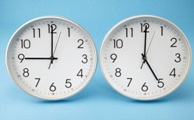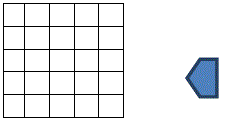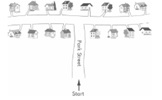Teachers should use every relevant subject to develop pupils’ mathematical fluency. Confidence in numeracy and other mathematical skills is a precondition of success across the national curriculum.
Teachers should develop pupils’ numeracy and mathematical reasoning in all subjects so that they understand and appreciate the importance of mathematics.
– National Curriculum in England Framework Document, September 2013, p10)
Connections within Mathematics
Making connections to other topics within this year group
Work within geometry relating to position and direction can be linked to other areas of the mathematics curriculum. For example, when using clock faces and hoops relating to position, key elements can be reinforced.
Making connections to this topic in adjacent year groups
Early Years Foundation Stage
Mathematics Early Learning Goal
- Children use everyday language to talk about size, weight, capacity, position, distance, time and money to compare quantities and objects and to solve problems.
Year 2
Pupils should be taught to:
- order and arrange combinations of mathematical objects in patterns and sequences
- use mathematical vocabulary to describe position, direction and movement, including movement in a straight line and distinguishing between rotation as a turn and in terms of right angles for quarter, half and three-quarter turns (clockwise and anti-clockwise).
Non statutory guidance
Pupils should work with patterns of shapes, including those in different orientations. Pupils use the concept and language of angles to describe ‘turn’ by applying rotations, including in practical contexts (for example, pupils themselves moving in turns, giving instructions to other pupils to do so, and programming robots using instructions given in right angles)
Cross-curricular and real life connections
Aspects of position, direction and movement can be integrated with work in other areas of the curriculum.
PE and dance lessons prove easy contexts in which to apply and consolidate skills. Games can include instructions relating to position and direction, e.g. labelling the corners of a room the ‘N, S, E and W’
Action songs, rhymes and games such as ‘Simon Says…’ can be adapted to include directional instructions
Many popular children’s stories can provide engaging contexts for this mathematical work. ‘We’re Going on a Bear Hunt’ (Rosen, M.& Oxenbury, H.,1997, Walker Books) is a good example where the vocabulary of position, direction and movement can be used in context. ‘Rosie’s Walk’ (Hutchins, P, 1998, Bodley Head) and ‘Katie Morag Delivers the Mail’(Hedderiwck, M, 2-1-, Red Fox): both provide superb contexts in which to teach an understanding of directional maps and models
Small world play resources, using play mats and figures, can provide excellent settings for creating real life scenarios (traffic following set routes, animals being delivered to a zoo, stacking classroom shop shelves with supplies etc.) to physically demonstrate and practise key skills.





